Filter by
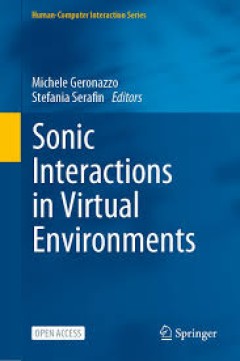
Sonic Interactions in Virtual Environments
This open access book tackles the design of 3D spatial interactions in an audio-centered and audio-first perspective, providing the fundamental notions related to the creation and evaluation of immersive sonic experiences. The key elements that enhance the sensation of place in a virtual environment (VE) are: Immersive audio: the computational aspects of the acoustical-space properties of Vi…
- Edition
- 1
- ISBN/ISSN
- 978-3-031-04021-4
- Collation
- -
- Series Title
- Human–Computer Interaction Series
- Call Number
- XXII, 428
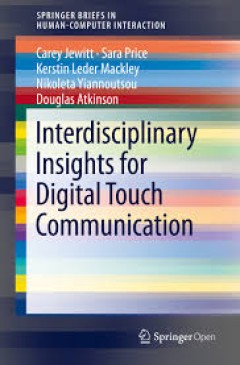
Interdisciplinary Insights for Digital Touch Communication
Communication is increasingly moving beyond ‘ways of seeing’ to ‘ways of feeling’. This Open Access book provides social design insights and implications for HCI research and design exploring digitally mediated touch communication. It offers a socially orientated map to help navigate the complex social landscape of digitally mediated touch for communication: from everyday touch-screens…
- Edition
- -
- ISBN/ISSN
- 9783030245641
- Collation
- XVII, 131
- Series Title
- -
- Call Number
- -

European Language Grid: A Language Technology Platform for Multilingual Europe
This open access book provides an in-depth description of the EU project European Language Grid (ELG). Its motivation lies in the fact that Europe is a multilingual society with 24 official European Union Member State languages and dozens of additional languages including regional and minority languages. The only meaningful way to enable multilingualism and to benefit from this rich linguistic …
- Edition
- 1
- ISBN/ISSN
- 978-3-031-17258-8
- Collation
- -
- Series Title
- Cognitive Technologies
- Call Number
- XXX, 360
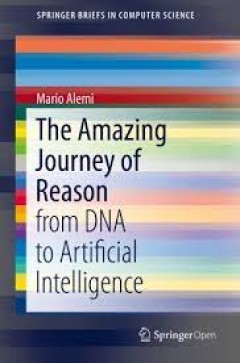
The Amazing Journey of Reason : from DNA to Artificial Intelligence
This Open Access book explores questions such as why and how did the first biological cells appear? And then complex organisms, brains, societies and –now– connected human societies? Physicists have good models for describing the evolution of the universe since the Big Bang, but can we apply the same concepts to the evolution of aggregated matter –living matter included? The Amazing Journ…
- Edition
- -
- ISBN/ISSN
- 978-3-030-25962-4
- Collation
- XVI, 113 halaman
- Series Title
- Springer Briefs in Computer Science
- Call Number
- 005 ALE a

Intertwingled: The Work and Influence of Ted Nelson
This engaging volume celebrates the life and work of Theodor Holm “Ted” Nelson, a pioneer and legendary figure from the history of early computing. Presenting contributions from world-renowned computer scientists and figures from the media industry, the book delves into hypertext, the docuverse, Xanadu and other products of Ted Nelson’s unique mind. Features: includes a cartoon and a sequ…
- Edition
- -
- ISBN/ISSN
- 978-3-319-16925-5
- Collation
- XVI, 150
- Series Title
- History of Computing (HC)
- Call Number
- 001 INT

The Hackable City : Digital Media and Collaborative City-Making in the Networ…
This open access book presents a selection of the best contributions to the Digital Cities 9 Workshop held in Limerick in 2015, combining a number of the latest academic insights into new collaborative modes of city making that are firmly rooted in empirical findings about the actual practices of citizens, designers and policy makers. It explores the affordances of new media technologies for em…
- Edition
- 1
- ISBN/ISSN
- 9789811326943
- Collation
- XV, 302 hlm,: ill, lamp;
- Series Title
- -
- Call Number
- -
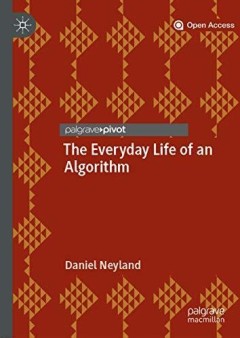
The Everyday Life of an Algorithm
This open access book begins with an algorithm–a set of IF…THEN rules used in the development of a new, ethical, video surveillance architecture for transport hubs. Readers are invited to follow the algorithm over three years, charting its everyday life. Questions of ethics, transparency, accountability and market value must be grasped by the algorithm in a series of ever more demanding for…
- Edition
- 1
- ISBN/ISSN
- 9783030005788
- Collation
- IX, 151 hlm; ill., lamp.,
- Series Title
- -
- Call Number
- -
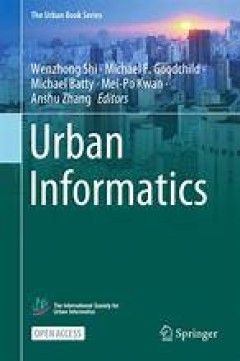
Urban Informatics
This open access book is the first to systematically introduce the principles of urban informatics and its application to every aspect of the city that involves its functioning, control, management, and future planning. It introduces new models and tools being developed to understand and implement these technologies that enable cities to function more efficiently – to become ‘smart’ and �…
- Edition
- 1
- ISBN/ISSN
- 978-981-15-8983-6
- Collation
- oer.unej.ac.id
- Series Title
- The Urban Book Series
- Call Number
- 004

AI, Data, and Digitalization : First International Symposium, SAIDD 2023, Sog…
This open access book constitutes the revised selected papers of the First International Symposium on AI, Data and Digitalization, SAIDD 2023, held in Sogndal, Norway, during May 9–10, 2023. The 13 full papers included in this volume were carefully reviewed and selected from 42 submissions. The papers deal with the impact of data and AI on the digital revolution and their contribution to sol…
- Edition
- -
- ISBN/ISSN
- 978-3-031-53770-7
- Collation
- X, 203
- Series Title
- 1810
- Call Number
- 001 AID

Nordic Artificial Intelligence Research and Development : 4th Symposium of th…
This book constitutes the refereed proceedings of the 4th Symposium of the Norwegian AI Society, NAIS 2022, held in Oslo, Norway, during May 31–June 1, 2022. The 11 full papers included in this book were carefully reviewed and selected from 17 submissions. They were organized in topical sections as follows: robotics and intelligent systems; ai in cyber and digital sphere; ai in biological a…
- Edition
- -
- ISBN/ISSN
- 978-3-031-17030-0
- Collation
- XII, 139p
- Series Title
- -
- Call Number
- 001 NOR
 Computer Science, Information & General Works
Computer Science, Information & General Works  Philosophy & Psychology
Philosophy & Psychology  Religion
Religion  Social Sciences
Social Sciences  Language
Language  Pure Science
Pure Science  Applied Sciences
Applied Sciences  Art & Recreation
Art & Recreation  Literature
Literature  History & Geography
History & Geography